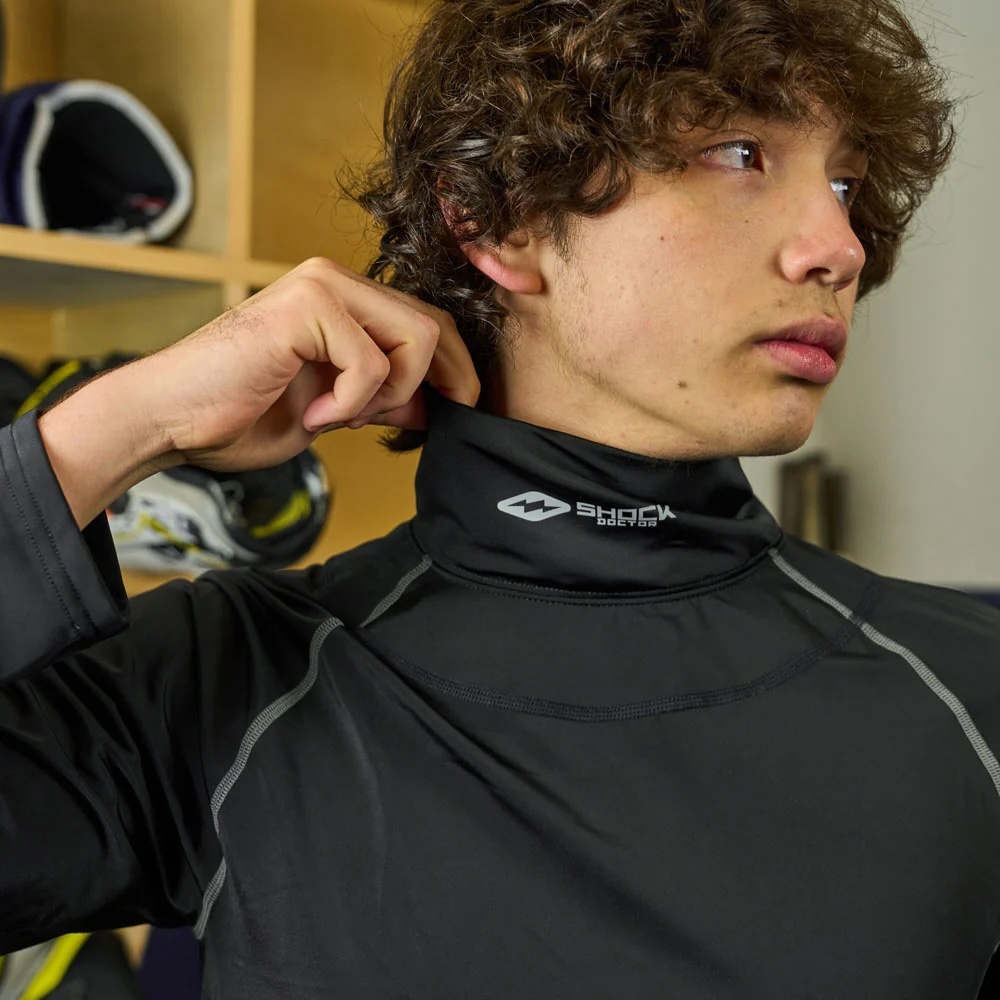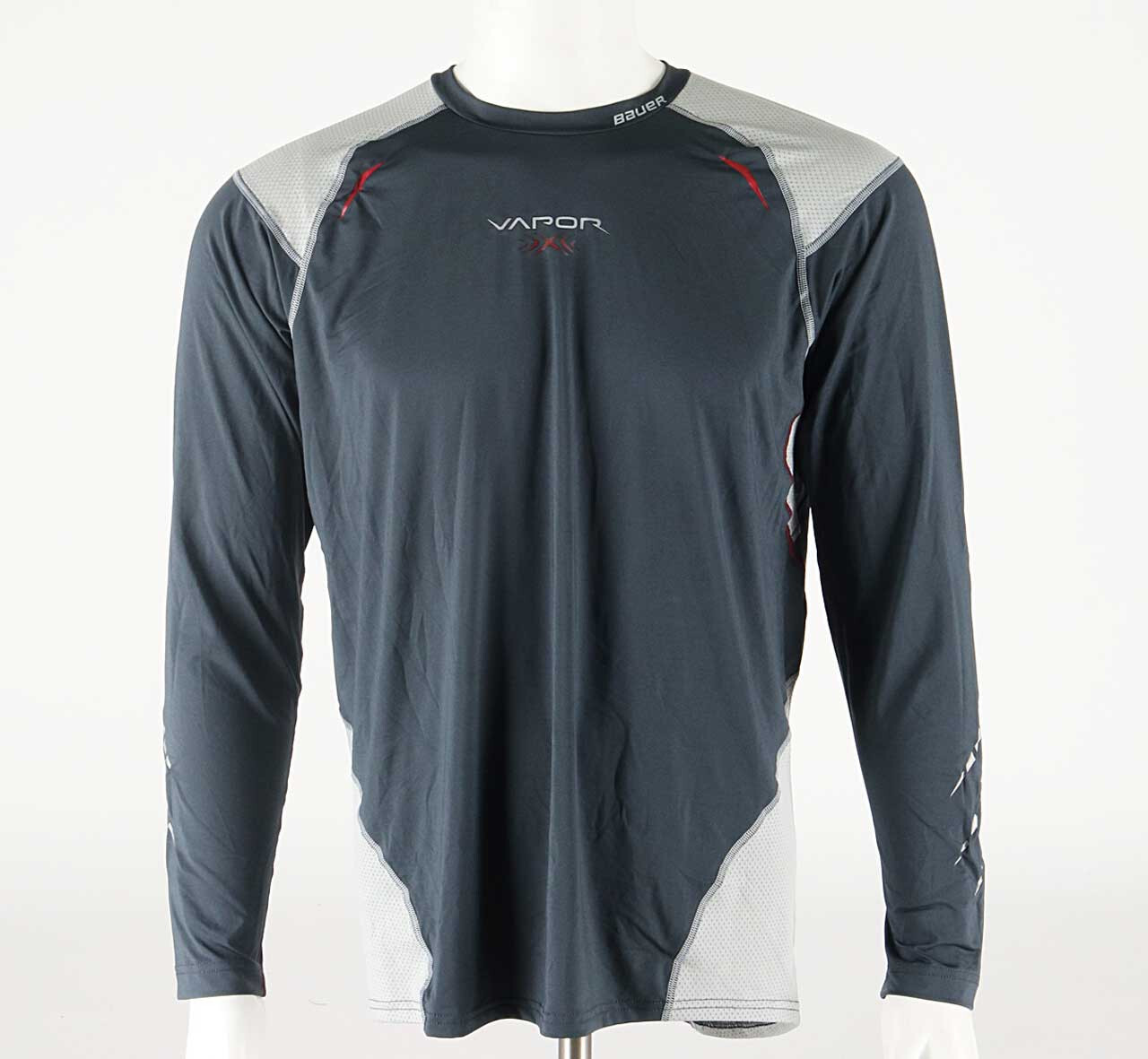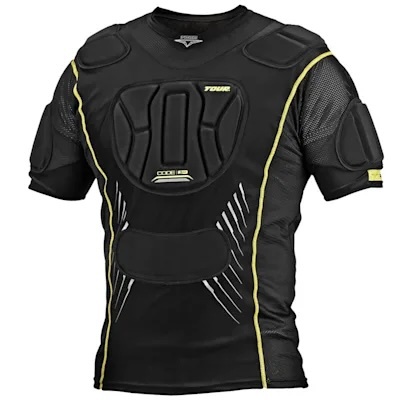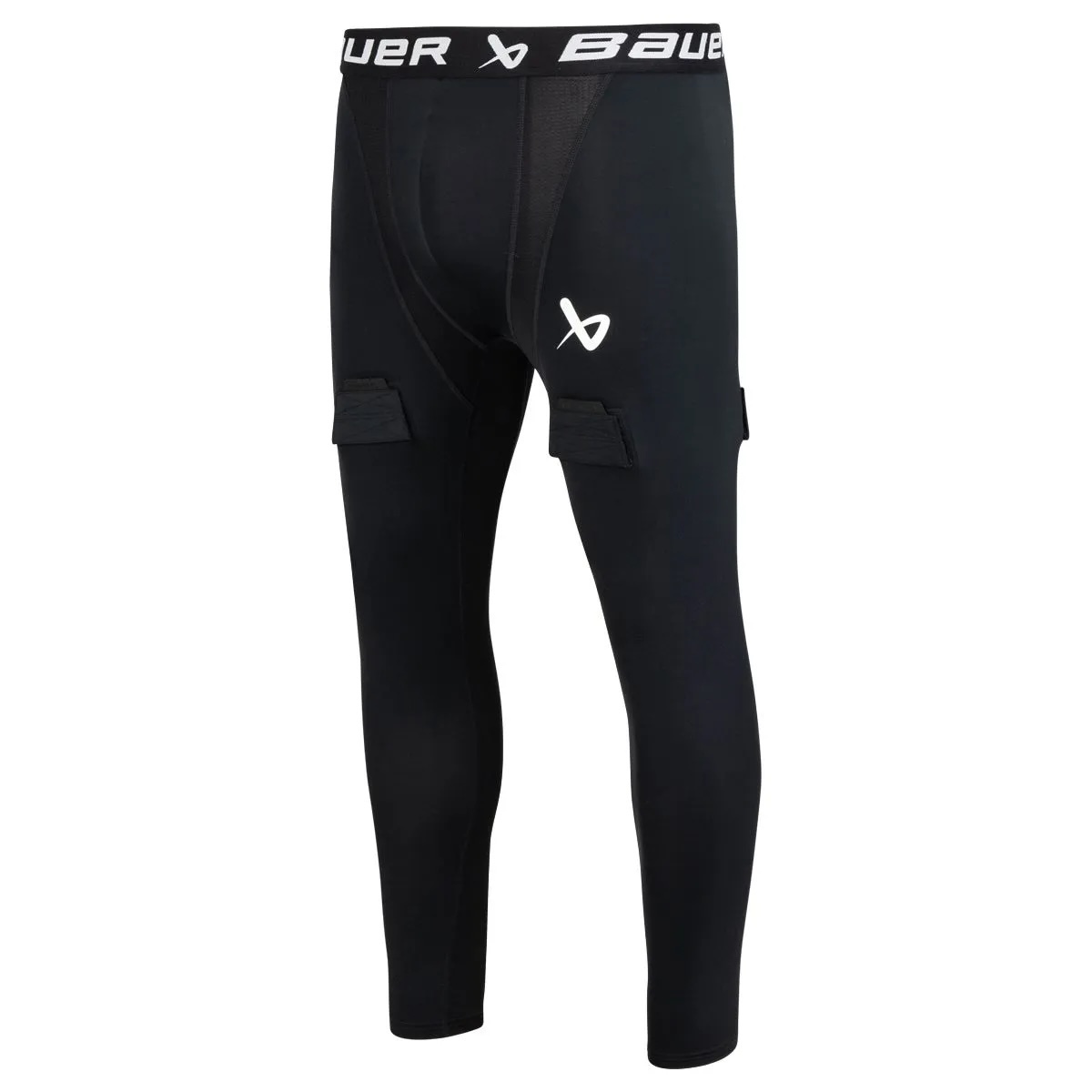Choosing the right base layer makes every shift feel better. It’s the first thing on and the last line of comfort, supporting thermal regulation, keeping skin sweat-free, and reducing rub points under pads.
In this guide, you’ll learn all about hockey undergear, how to choose moisture-wicking base layers for your rink and intensity, and how to care for them so they last.
Why Base Layers Matter in Hockey
 A strong base layer is the unsung hero of your kit, keeping everything else working efficiently. It regulates your body temperature, moves sweat away from your skin, and reduces chafing so your pads feel better and stay put. Moisture-moving fabrics pull sweat off your skin, helping you stay drier and warmer between shifts, and cooler during hard skates.
A strong base layer is the unsung hero of your kit, keeping everything else working efficiently. It regulates your body temperature, moves sweat away from your skin, and reduces chafing so your pads feel better and stay put. Moisture-moving fabrics pull sweat off your skin, helping you stay drier and warmer between shifts, and cooler during hard skates.
Think of it as the performance barrier between skin and hockey protective gear and hockey jersey; your pads last longer, and you can fully focus on the next shift—not sticky elbows. Players shopping for hockey undergarments or a moisture-wicking hockey base layer should prioritize pieces that manage sweat first, then warmth. if you’re new to layering, review our guide on how to dress for hockey for a clear step-by-step breakdown.
What Makes a Good Hockey Base Layer?
Materials and features matter; look for performance fabric that’s breathable, quick-drying, and comfortable under pads. Synthetics like polyester or nylon blends move moisture quickly, while merino wool balances moisture management with odor control. Fit should be close without pinching—compression can help manage muscle oscillation and perceived soreness for some athletes.
Key build details:
- Flatlock seams to reduce rubbing
- Four-way stretch for mobility
- Mesh panels in high-heat zones.
For smell control, look for odor control materials such as treated synthetics or merino. For more buying context and moisture-wicking undergear tips, see our 2025 gear trends piece. Additionally, cut-resistant sleeves, socks, and neck protection reduce laceration risk; USA Hockey now requires neck laceration protection for players under 18. Consider cut protection ratings when shopping—ANSI/ISEA 105 labels run A1 to A9, with higher numbers indicating higher cut resistance.
Types of Base Layers for Different Needs
 Match your layer to the job: cooling for hard skates, thermal for cold rinks, padded for contact, and pieces that pair well with best hockey neck guards for added cut protection.
Match your layer to the job: cooling for hard skates, thermal for cold rinks, padded for contact, and pieces that pair well with best hockey neck guards for added cut protection.
- Compression tops and hockey compression shorts: Snug, breathable layers that help keep pads stable and may reduce post-session soreness for some players.
- Thermal options (hockey thermal wear, thermal hockey leggings): Heavier weights or brushed interiors for cold rinks and long practices. Pair with insulated hockey socks when temps drop.
- Padded base layers: Youth and shot-blocking roles benefit from light hip, rib, or forearm padding integrated into the garment.
- Breathable hockey undergarments for hot skates: Look for mapped mesh and lighter weights to shed heat.
Popular brands players consider for hockey performance wear and hockey apparel include Bauer, CCM, Under Armour, Shock Doctor, Warroad, and Aegis. When browsing, be sure to compare fabric weights, stitching, and any BNQ-certified neck or cut-resistant add-ons where relevant.
What to Wear Under Hockey Gear: Full Breakdown
 Use this quick checklist to outfit what goes under your pads—all chosen to fit well, wick sweat, and stay in place:
Use this quick checklist to outfit what goes under your pads—all chosen to fit well, wick sweat, and stay in place:
- Top: Long-sleeve compression or fitted top keeps elbow pads from rubbing and moves sweat.
- Bottom: Compression pants or hockey shorts/hockey gear bottoms with built-in jock/jill simplify your setup and include sock tabs.
- Socks: Hockey socks go over shin guards; attach to Velcro tabs on your jock shorts or pants to prevent slippage.
- Neck & cut protection: Consider BNQ-certified neck guards and cut-resistant socks/sleeves; USA Hockey mandates neck protection for youth.
- Hands & fit: If you’re dialing in gloves after you swap layers, use our hockey glove sizing guide.
Build your kit around the activity: choose warmer layers for cold rinks and focus on wicking for high-intensity skates. Not sure where to start with sticks and balance? Learn how to tape your hockey stick and revisit skate sharpening and performance to round out your setup. Finally, pair the base with well-fitting pro stock hockey pants so your pads stay in place.
Care and Longevity of Your Base Layers
Good care extends life and performance. Wash soon after play (in cold water) and avoid fabric softener, which can block wicking. Air dry to protect elastane and fit.
If odor builds up in skates even when layers are clean, rotate pairs and add odor-fighting skate accessories between sessions. For tech fabrics, use gentle detergents and follow label guidance; cold water care helps preserve fibers and reduce energy use. Plan to replace high-use base layers about annually—or sooner if elasticity sags or odor persists despite proper care.
Choose the Best Hockey Base Layer for You
 Investing in the best hockey base layer pays off every shift. Dry, comfortable skin reduces distractions, keeps pads where they belong, and supports consistent movement patterns. Compression pieces can help players feel supported, thermals keep you steady on cold benches, and cut-resistant accessories add a safety margin.
Investing in the best hockey base layer pays off every shift. Dry, comfortable skin reduces distractions, keeps pads where they belong, and supports consistent movement patterns. Compression pieces can help players feel supported, thermals keep you steady on cold benches, and cut-resistant accessories add a safety margin.
Next steps:
- Match your rink temps and intensity to fabric weight and design.
- Prioritize fit and comfort, then add safety features like BNQ-certified neck guards and cut-resistant socks.
- Build a full kit that plays well together—from base layers to hockey team accessories, hockey accessories, and custom hockey jerseys—so your hockey equipment works as one system.
- For a deeper skills tune-up, revisit hockey layering techniques in this guide and explore hockey training gear that complements your clothing choices.
Gear up with Pro Stock Hockey Today — explore player protection and complete your setup.

